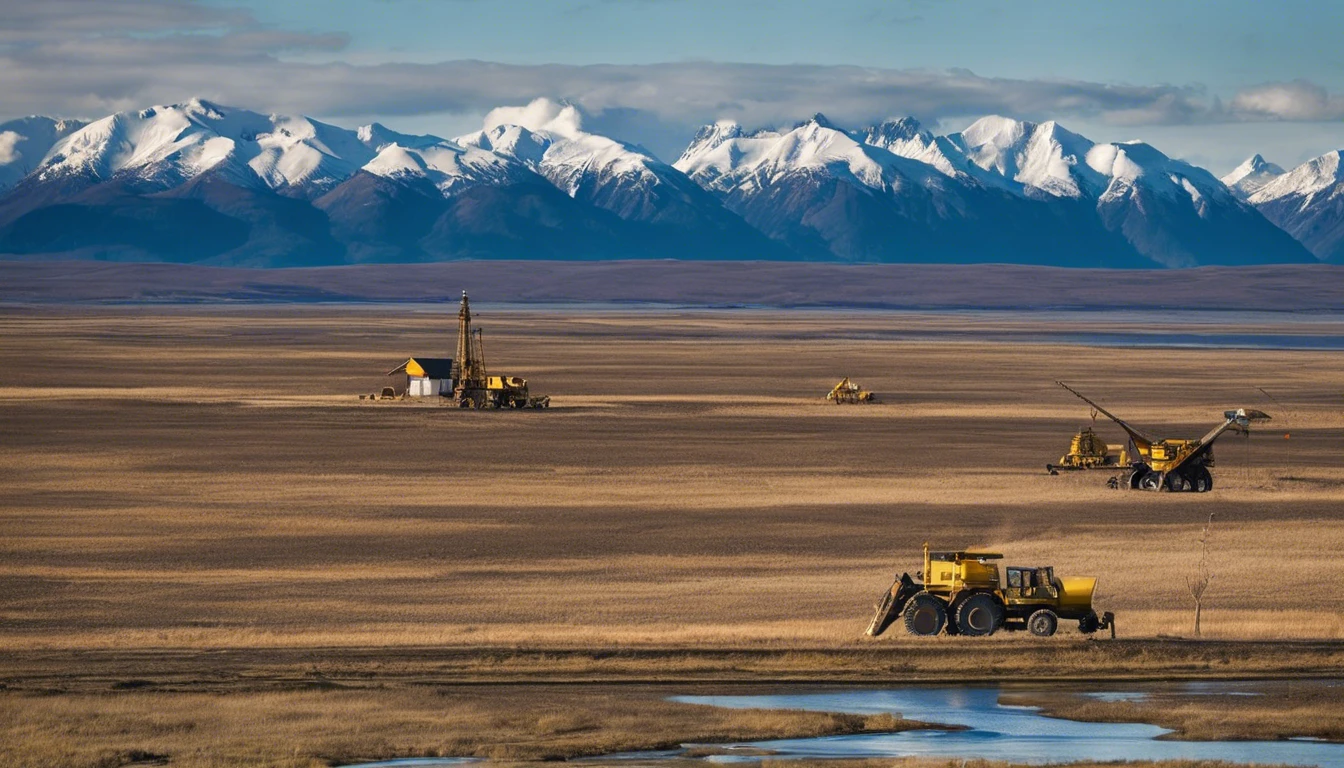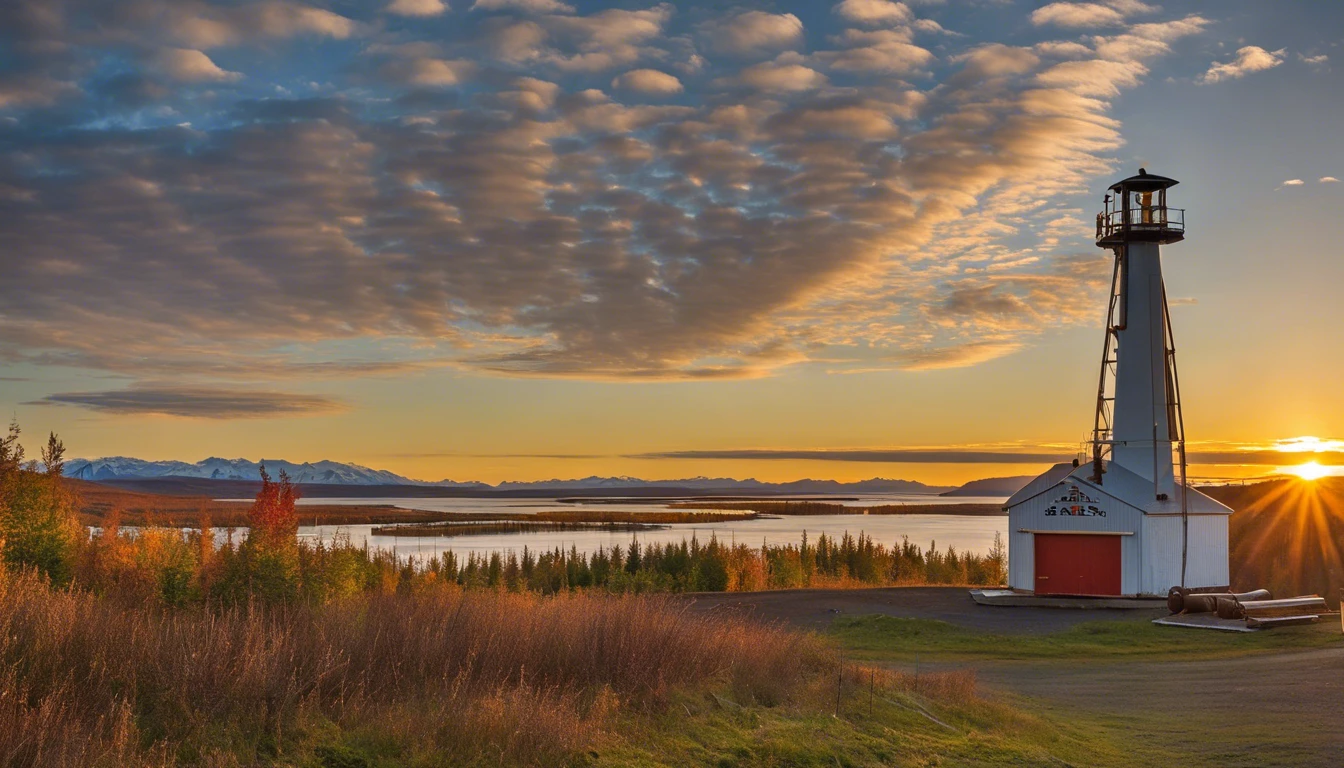Alaska
Alaska, the largest state in the U.S., spans an impressive 665,384 square miles of breathtaking landscapes, including the Tongass National Forest and the Chugach Mountains. But these are just a few examples of the many natural wonders you'll encounter when moving to Alaska. As of 2022, the state's population stands at approximately 736,556, marking its highest since 2018, following a second consecutive year of growth after four years of decline Alaska Beacon. The state is known for its diverse landscapes, boasting over three million lakes.
The backbone of Alaska's economy is oil production. The oil field regions of Alaska are among the most active and lucrative globally. So, if you're contemplating a move to the area for work, you'd be entering a robust and thriving industry. This is where hiring a reliable moving company becomes crucial.
However, oil isn't the only player in Alaska's economic game. Tourism and fishing significantly contribute to the state's economy, providing a wide array of job opportunities. In 2019, over 2.2 million visitors were welcomed in Alaska, generating over $4.5 billion and supporting more than 50,000 jobs. Whether your interests lie in guiding tourists on wilderness expeditions, working on a commercial fishing boat, or something in between, there's likely a job that suits you in Alaska.
The employment rate in Alaska tends to be stable, and there's a fair chance you'll find work in your chosen field. Moreover, the state's natural beauty and outdoor recreational opportunities make it a fantastic place to live, especially if you have a penchant for exploring the great outdoors. Here are a few activities you might enjoy when not busy with the moving company:
- Hiking in the Tongass National Forest
- Skiing or snowboarding in the Chugach Mountains
- Fishing in one of the state's many rivers or lakes
- Exploring the state's diverse wildlife on a nature tour
Moving to Alaska's oil field regions may seem like a big leap, but it could offer a wealth of opportunities. Not just for work, but for a unique and fulfilling lifestyle too. The state offers a unique environment for raising kids, with vast natural beauty and outdoor adventures like hiking, camping, and wildlife viewing in places like the Talkeetna Mountains, Kenai Fjords, Wrangell-St. Elias National Park.
The healthcare system in Alaska is also commendable, ranking #30 in the 2022 State Health System Performance Scorecard. The healthcare sector is valued at $7.5 billion, employing nearly 39,000 Alaskans. Alaska's education system offers unique growth and learning opportunities extending beyond traditional settings, despite facing challenges such as low reading and math scores.
Living in Alaska emphasizes a healthy and active lifestyle, and its community is shaped by diverse populations, including the Tlingit, Haida, Ts’msyen, Yupik, and Aleut. Major cities like Anchorage offer a blend of urban conveniences with easy access to the outdoors.
Alaska is accessible by highway, air, and water with first-class accommodations. Communities such as Fairbanks, Juneau, and Palmer are noted for their welcoming residents, top-notch education offerings (K-12 and University), diverse religions, above-average medical care, and well-administered local and state governments. The state is also known for its scenic beauty, recreational opportunities, presence of wildlife, affordability of land outside Anchorage, and Southeast cities, distinctively real winters, and job opportunities in resource extraction industries such as oil, mining, and fishing. The reduced regulations with no residential building codes outside of cities also appeal to some residents🔗.
Alaska is described as the last frontier where you can immerse in pristine, wild environments. It's home to diverse wildlife and natural resources, offering a unique perspective on life compared to the lower 48 states🔗. Living in Alaska is described as suitable for introverts, athletes, and nature lovers. The community in Alaska is characterized by individual freedom, a slow pace of life, and a rejection of mainstream cultural norms. The state's live-and-let-live culture and scenic beauty contribute to its allure🔗.
So, if you're considering hiring a moving company for your move to Alaska, you're looking at a state with a thriving economy, diverse job opportunities, a robust healthcare system, and a unique educational environment, all set within some of the most stunning landscapes in the world.
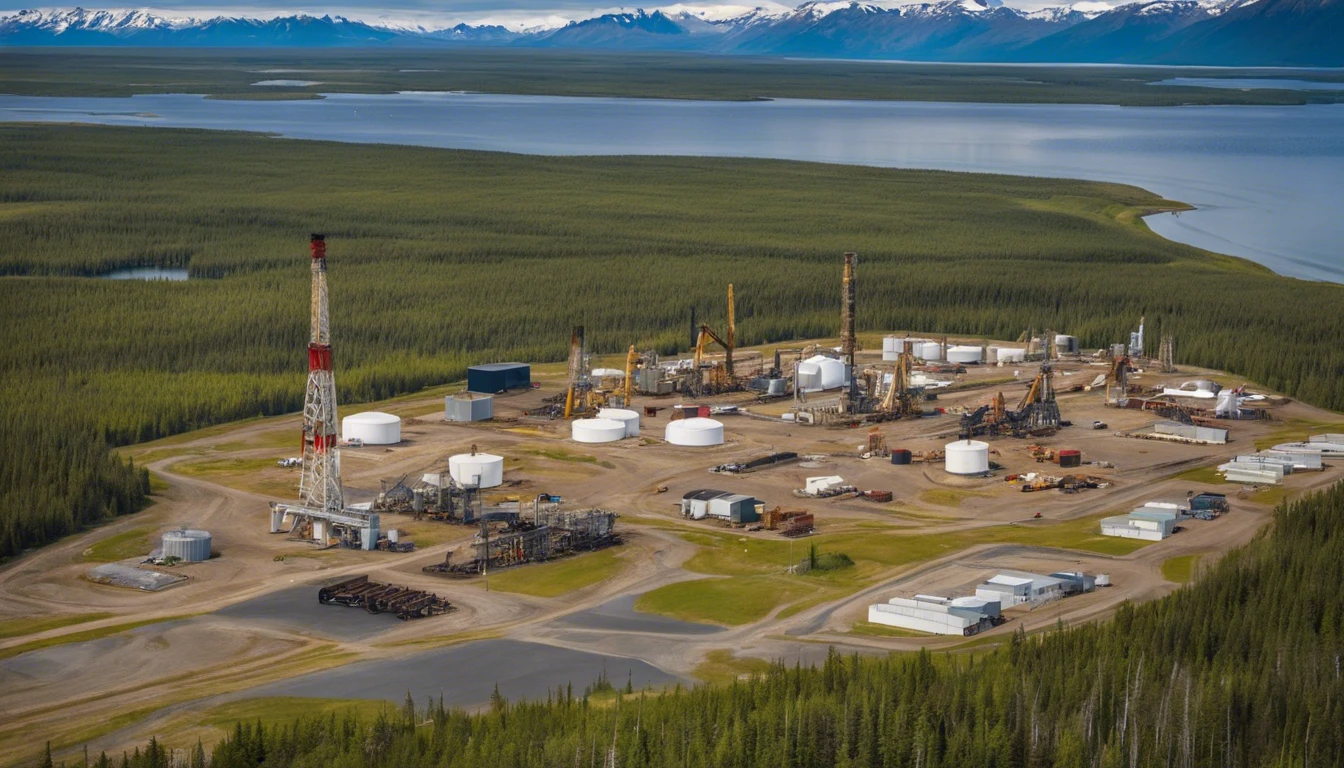
Anchorage
Anchorage is the largest city in Alaska and is home to about 40% of the state's population. With a 2021 population of 292,545, it's a bustling metropolitan area that offers a wide range of resources for new residents. If you're considering a move to this region, here's what you need to know source.
First off, Anchorage is not your typical oil field area. While it's true that the city is a hub for the oil industry, it's also a cultural, educational, and healthcare center. This means you'll have access to more than just oil-related opportunities.
Moving to Anchorage presents a blend of urban amenities and natural beauty, making it an exciting opportunity, especially for those who've aspired to live there. Newcomers are often regarded as friendly, partly because many Alaskans themselves have relocated from elsewhere and empathize with the challenges of moving. A sense of community, where people look out for and help each other, is a highlighted aspect of living here source.
Now, let's talk about the weather. Anchorage is known for its cold winters, but the summers are surprisingly mild, with temperatures often reaching the 60s and 70s. Just be prepared for the long winter nights and equally long summer days, as Alaska is renowned for these.
As a new resident, you might be wondering about the cost of living. It's important to note that while salaries in Alaska tend to be higher than the national average, so does the cost of living. The median household income in Anchorage was $88,871 in 2021, but things like groceries, utilities, and housing tend to be more expensive here. However, the state does offer a Permanent Fund Dividend, an annual payout to all Alaska residents, which can help offset these costs source.
Anchorage embodies a diverse array of neighborhoods catering to different lifestyles and preferences. For potential movers, here are the top 5 neighborhoods highlighted by us:
- Rogers Park: It stands out with a blend of suburban tranquility and urban convenience. Key statistics include a population of 9,954, a median household income of $111,214, and a noted diversity in racial composition and household dynamics.
- Downtown Anchorage: Known for urban living with proximity to natural beauty and historical sites. It has a population of 3,991, and a median household income of $122,946. The area is celebrated for its walkability, nightlife, and community atmosphere.
- South Addition: It combines suburban peace with historical charm. This neighborhood boasts high rankings in livability, including an overall grade of 'A', a median home value of $643,772, and top-rated public and private schools, making it an alluring option for families.
- Huffman-O'Malley: A sanctuary offering a harmonious blend of suburban peace and city vibrancy. The area features diverse housing options and a density of 1,308 people per square mile. The median household income is $176,127.
- Rabbit Creek: Distinguished by luxury and tranquility, with spacious lots and breathtaking views. The population is 10,892, with a median household income of $148,792. The community values quality of life, with a focus on education and outdoor activities.
When it comes to amenities, Anchorage has plenty to offer:
- Outdoor Activities: If you're a nature lover, you'll be in paradise. From hiking and biking in the summer to skiing and snowboarding in the winter, there's always something to do.
- Cultural Experiences: Anchorage is home to several museums, art galleries, and theaters. The city also hosts the annual Iditarod Trail Sled Dog Race, a major event that draws visitors from around the world.
- Healthcare: The city boasts top-notch healthcare facilities, including the Alaska Native Medical Center and the Providence Alaska Medical Center.
- Education: Anchorage has a strong education system with numerous public and private schools, as well as the University of Alaska Anchorage.
In addition, residents move to Anchorage for various reasons, including the desire to escape city life, experience nature closely, enjoy the natural beauty, and because of a love for winter source.
Overall, while moving to Anchorage does come with its unique challenges, it also offers a wealth of opportunities and resources. Whether you're moving for work in the oil fields or for another reason, you'll find a welcoming community ready to help you settle in. Migration data for Alaska is derived from three principal sources: Alaska Permanent Fund Dividend applications, IRS Tax Statistics, and the American Community Survey (ACS). Each source provides unique insights but also has specific limitations source.
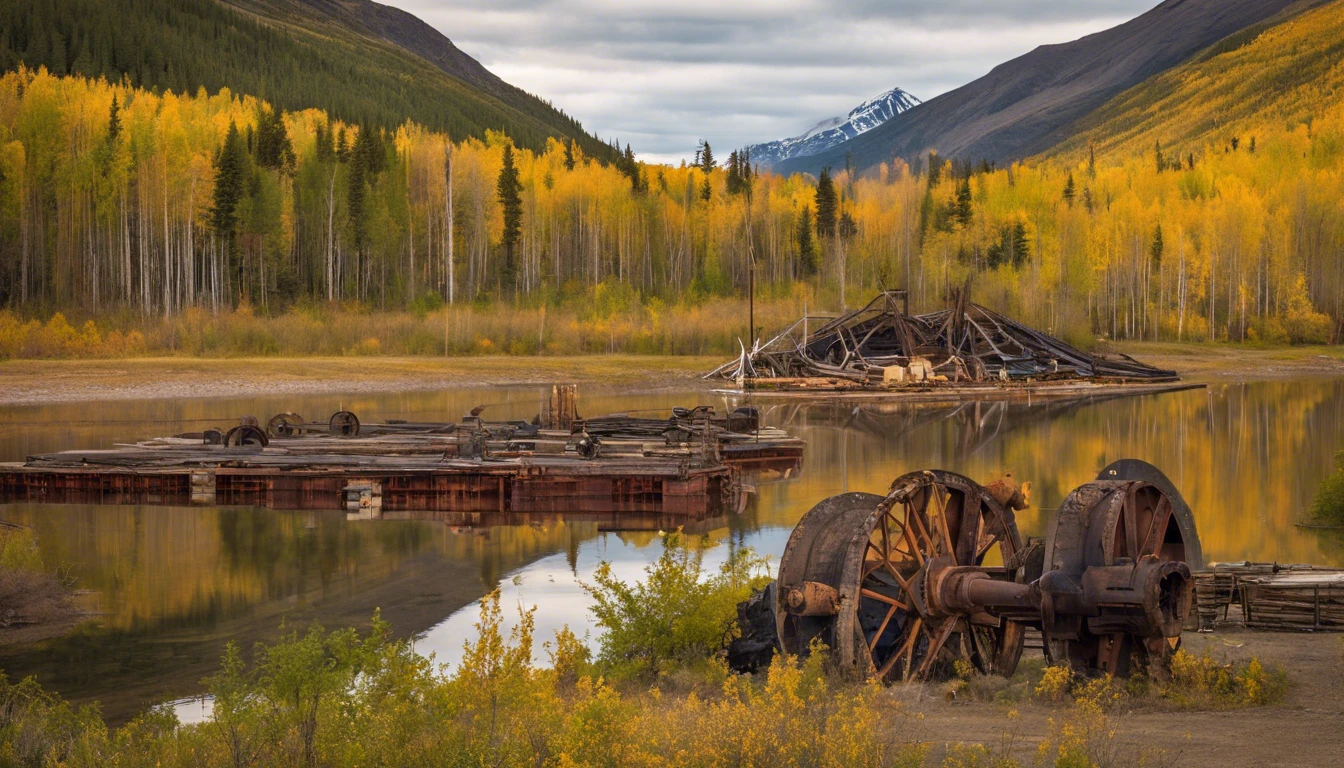
Fairbanks
Fairbanks is one of the most prominent cities in Alaska, with a reputation as a hub for military and education. It's home to the University of Alaska Fairbanks, a major research institution, and several military installations. As of 2021, the city had a population of about 97,149, which showed a 1.33% decline from the previous year.
One thing to note about Fairbanks is its geographical location. It's situated in the interior region of Alaska, far from the moderating influence of the ocean. This results in more extreme temperatures compared to coastal areas. In winter, it's common for temperatures to plummet to -40 degrees Fahrenheit or even lower, with historical records showing temperatures dropping to -80 degrees Fahrenheit. On the flip side, summer can bring surprisingly warm weather, with highs occasionally reaching into the 90s or even 100 degrees. These temperature swings might be a bit of a shock if you're used to a more temperate climate.
Here are a few more things to know about Fairbanks:
- Northern Lights: Thanks to its location, Fairbanks is one of the best places in the world to see the Northern Lights. This natural light display is a significant draw for tourists and can be a real perk if you're living there.
- Days and Nights: Be prepared for long winter nights and summer days. In December, there are less than four hours of daylight, while in June, the sun barely sets at all. This can affect sleep and mood, so it's something to consider when planning your move.
- Outdoor Activities: Despite the harsh winters, there's no shortage of outdoor activities. From skiing and snowboarding to hiking and fishing, there's something for every outdoor enthusiast. Additionally, gold panning in the summer, hunting, and trophy fishing are also popular activities.
- Cost of Living: Fairbanks is more affordable than many other Alaskan cities, but the cost of living is still higher than the U.S. average. The average price of a home in 2021 was around $245,700, and the median household income stood at $78,321. The homeownership rate was 58.8%, and the average commute time was 19.5 minutes. Keep this in mind when budgeting for your move.
If you're considering moving to Alaska with your family, you'll be pleased to know that the state offers a unique backdrop for raising kids, promoting a healthy, active lifestyle with abundant natural beauty and outdoor adventures. Its community fosters character development with a strong sense of independence and community support. In fact, over 120,000 indigenous people comprise 17% of the state's population, enriching Alaska's cultural diversity.
However, it's worth noting that the healthcare system, valued at $7.5 billion and employing nearly 39,000, faces challenges like delivering services in remote areas. But innovative solutions and a growing sector are expected to support an aging population and improve these sectors.
In terms of education, the state seeks to overcome low reading and math scores with comprehensive evaluations and initiatives like Alaska's Education Challenge. Despite facing a healthcare worker shortage, Alaska aims to address lifestyle-related conditions through community programs.
Overall, moving to Fairbanks can be a big change, but it also offers a unique lifestyle that you won't find anywhere else. With its natural beauty, strong community, and commitment to improving healthcare and education, it's certainly a place to consider for your next move.
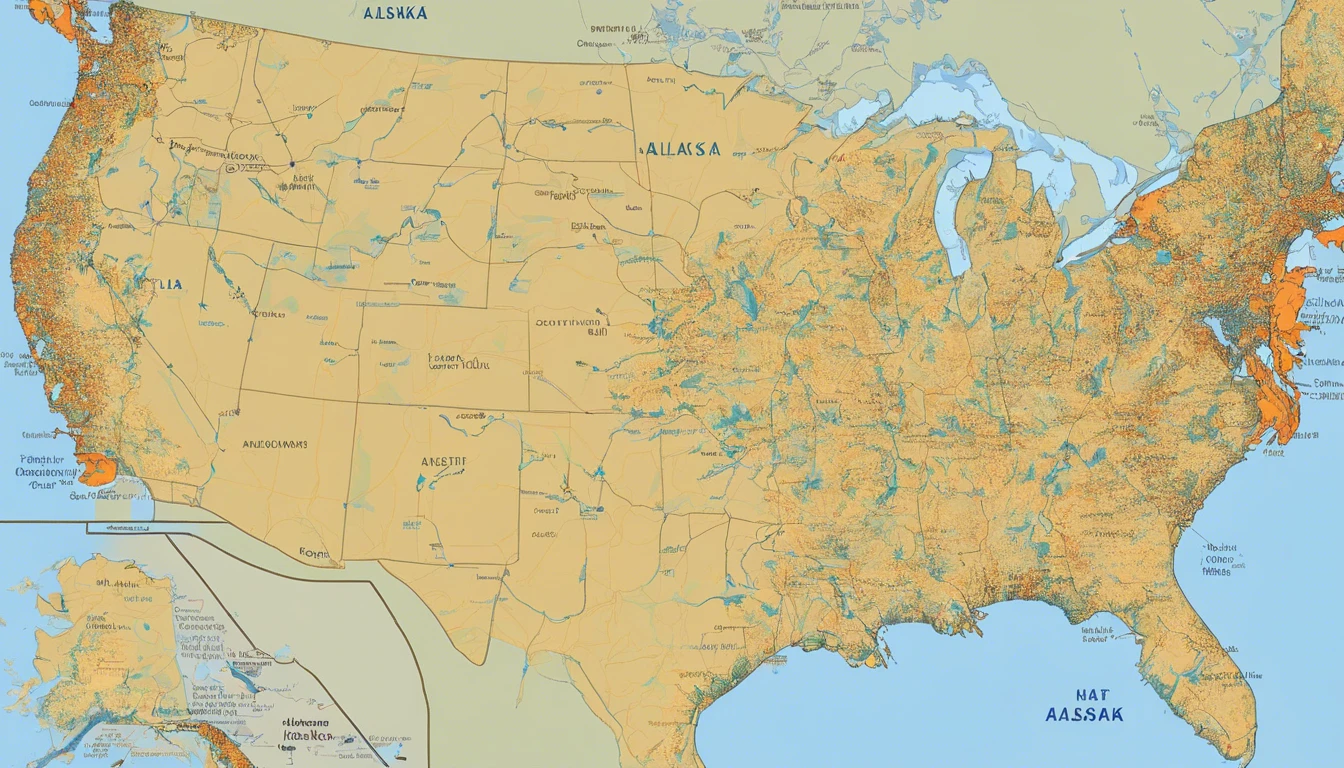
Juneau
Juneau
If you're considering moving to Alaska's oil field regions, you can't overlook Juneau, the state's capital. Although it's not directly an oil field region, it's a significant hub for many of the state's activities.
Among the Alaska's cities, Juneau stands out due to its milder weather. The city's climate is heavily influenced by the nearby Tongass National Forest, the largest national forest in the United States. This leads to a more temperate weather pattern compared to the harsh cold often associated with Alaska. So, if you're not keen on extreme cold, Juneau might be a good fit for you.
Juneau is also a major tourism hub. It offers a wide range of activities and attractions that can keep you entertained when you're not working. Here are a few highlights:
- Mendenhall Glacier: This magnificent glacier is a must-visit. You can explore it on foot, by kayak, or even fly over it in a helicopter.
- Tracy Arm Fjord: A stunning fjord with floating icebergs, waterfalls, and wildlife. It's a perfect destination for nature lovers.
- Juneau's downtown: Quaint and walkable, with a variety of shops, restaurants, and historic sites.
Moreover, Juneau has a welcoming community that is supportive and tight-knit. With a population of 32,240 in 2021, which saw a growth of 0.439% from the previous year, it's a place where you can feel at home even if you've just moved in. However, you should know that Juneau is not accessible by road due to geographical and environmental obstacles. It's encircled by mountains and glaciers, making road construction unfeasible. Travel to and from Juneau relies on flights and the Alaska Marine Highway System of ferries. Data USA
If you're planning to move to Juneau, you might want to consider these top family-friendly neighborhoods:
- Mendenhall Valley: Known for its suburban feel and outdoor activities, this neighborhood has seen a population growth of 8% since 2000, and boasts a median income of $79,371.
- Downtown Juneau: Offers urban vibrancy, a diverse population, and a median household income of $95,711.
- Douglas: An island community that provides serenity, a strong educational system, and a unique blend of nature and small-town feel.
- Auke Bay: Features waterside living, and despite a challenging housing market, it has a median income of $98,454.
- Lemon Creek: Highlighted for its convenience and accessibility to amenities, it's more expensive than 71.5% of neighborhoods in Alaska.
However, bear in mind that Juneau's housing market is challenging, with steep prices, such as $1025 per month for a small apartment and $500k minimum for a three-bedroom home. The median property value was $358,200 in 2021, with a 0.873% growth, and the cost of living is high, with significant expenses for groceries, utilities, and car maintenance. Data USA
The unique characteristics of each neighborhood cater to diverse preferences, making Juneau a fantastic place to live if you're working in one of Alaska's oil field regions and don't mind a bit of a commute. The city has a diverse population, with the largest ethnic groups being White (Non-Hispanic) at 62.5%, followed by Two+ (Non-Hispanic) at 11.4%, and American Indian & Alaska Native (Non-Hispanic) at 9.91%. Data USA For more details about each neighborhood, you can discover more about these neighborhoods.
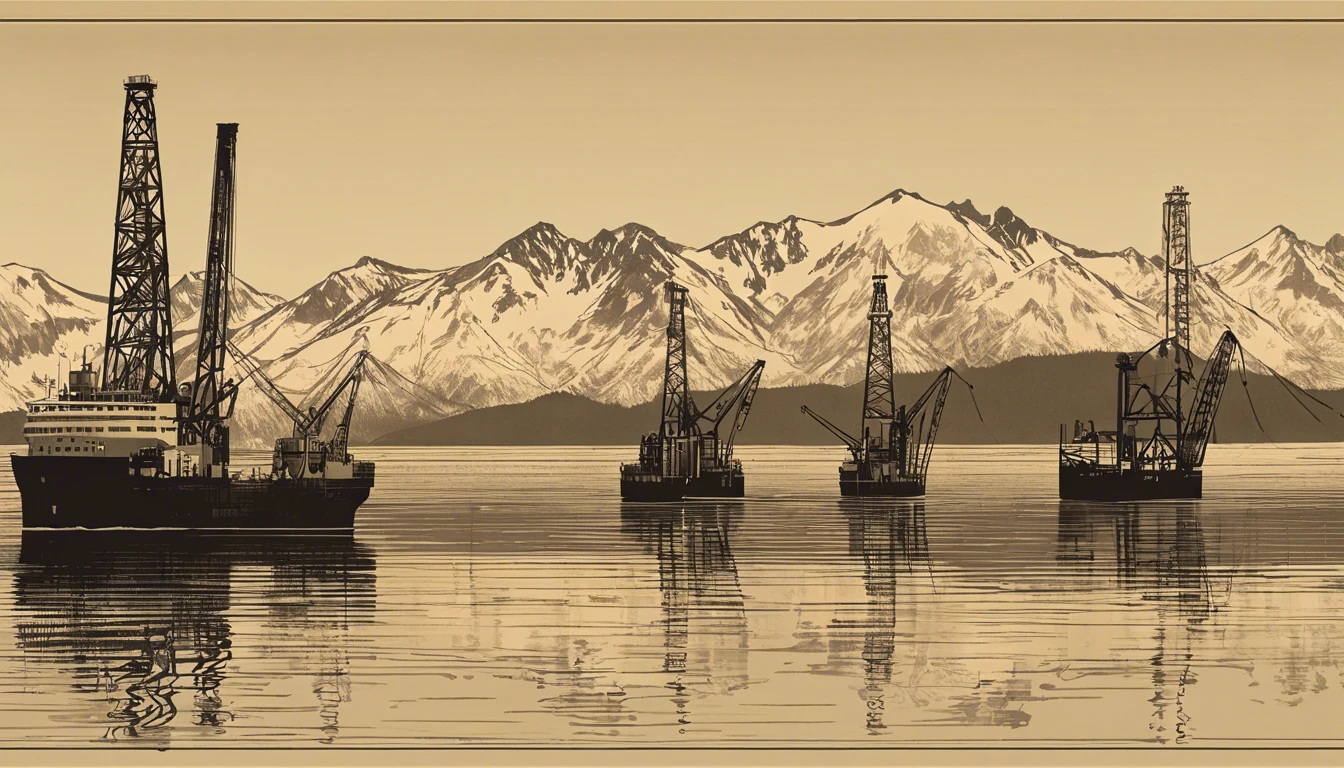
Alaska's oil field regions
Alaska's oil field regions, primarily located in the North Slope, play a vital role in the state's economy and the nation's energy security. It's one of the top oil-producing states in the United States, with current production from the Alaska North Slope amounting to about 720,000 barrels per day. The Trans-Alaska Pipeline System (TAPS) transports this crude oil to the Valdez Marine Terminal, from where it's shipped to refineries across the country, especially on the west coast, as these refineries are designed to process Alaska crude. The North Slope has produced over 18 billion barrels of oil since the Prudhoe Bay oil field was discovered according to the Resource Development Council.
Many oil companies operating in these regions provide shuttle services for their employees, making daily commuting hassle-free. You'll be taken from your housing location directly to your work area, significantly easing your transition to living and working in Alaska.
One unique benefit of living in these regions is the Permanent Fund Dividend (PFD), an annual subsidy to residents sourced from oil royalties. The PFD is an annual payment given to Alaskan residents, sourced from a portion of the state's oil royalties. The amount varies each year depending on the profits of the Alaska Permanent Fund. In 2023, for example, each eligible Alaskan resident received a dividend of $1,114 according to the Alaska Department of Revenue.
By living in Alaska's oil field regions, you get a share of the state's oil wealth, which can significantly boost your finances. This is a crucial aspect to consider when thinking about moving to these areas. In fact, the oil and gas industry has paid more than $20 billion in dividends to Alaskans through the Alaska Permanent Fund since statehood according to the Resource Development Council.
Beyond the financial benefits, Alaska's natural beauty, with its stunning landscapes, offers a multitude of outdoor activities. The state's education system is also commendable, with smaller class sizes allowing for personalized attention to students. Alaska has a low student-to-teacher ratio, with an average of 15.6 students per teacher according to the National Center for Education Statistics.
However, living in Alaska's oil field regions presents unique challenges. The weather can be extreme, with cold winters and short summers. The cost of living can also be high due to the remote location of many of these areas. But with careful planning and preparation, many people find that the benefits outweigh the challenges, making life in Alaska's oil field regions a rewarding experience.
When contemplating a move to Alaska, it's crucial to weigh all these factors and plan accordingly. The state's economy is dominated by the oil and natural gas industries, with Alaska ranking third in the nation for the highest amount of energy consumption per dollar of GDP according to the U.S. Energy Information Administration. We offer a variety of services to help make your move as smooth as possible. From packing and moving to auto-shipping, we can help ensure your transition to life in Alaska is a successful one.
